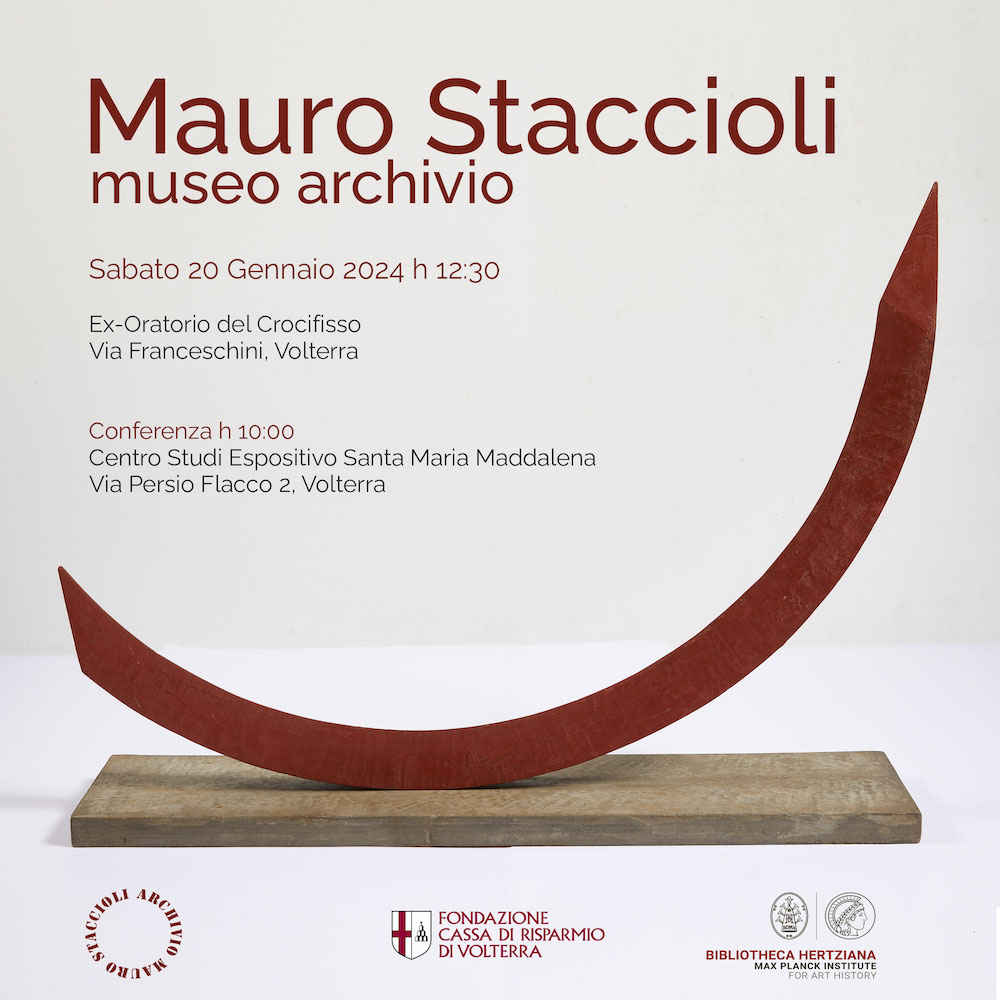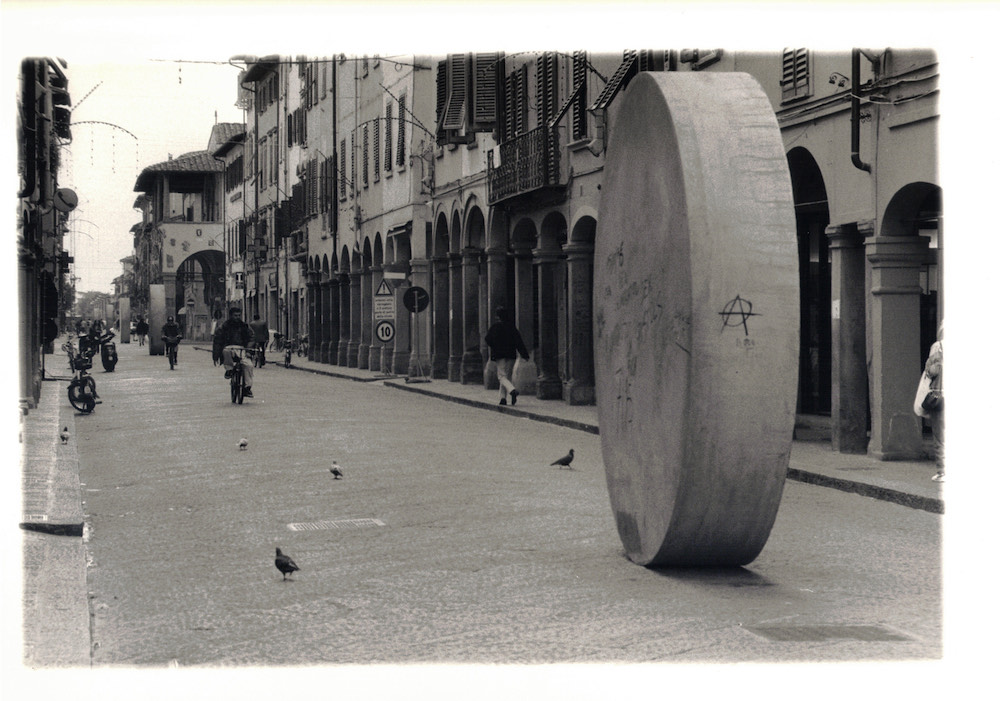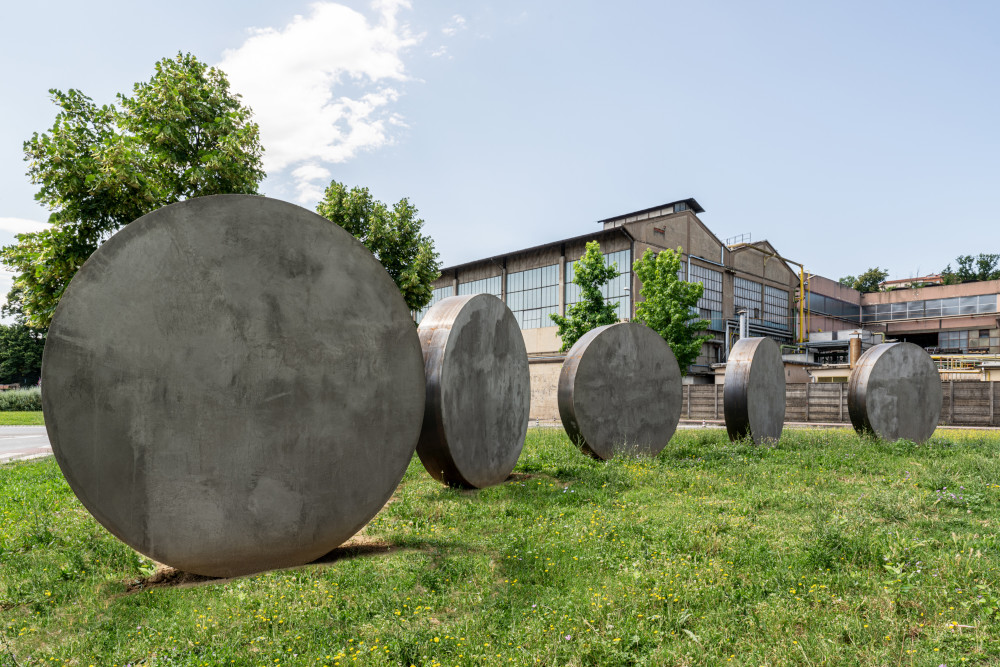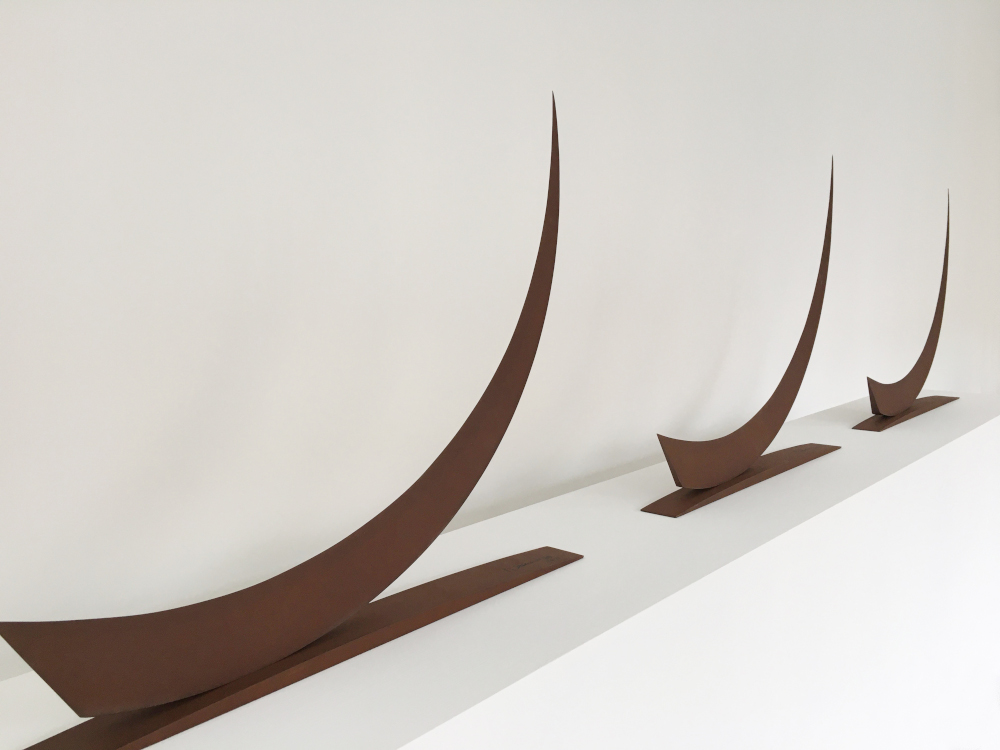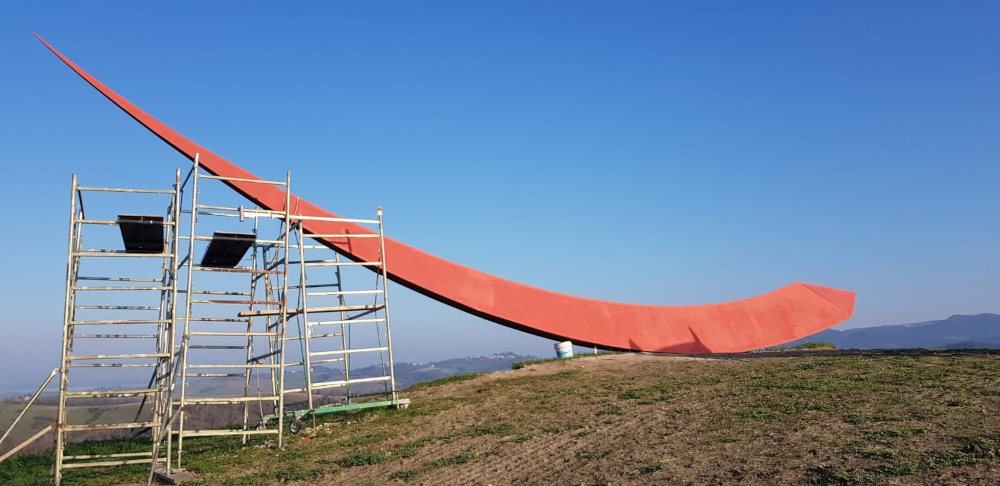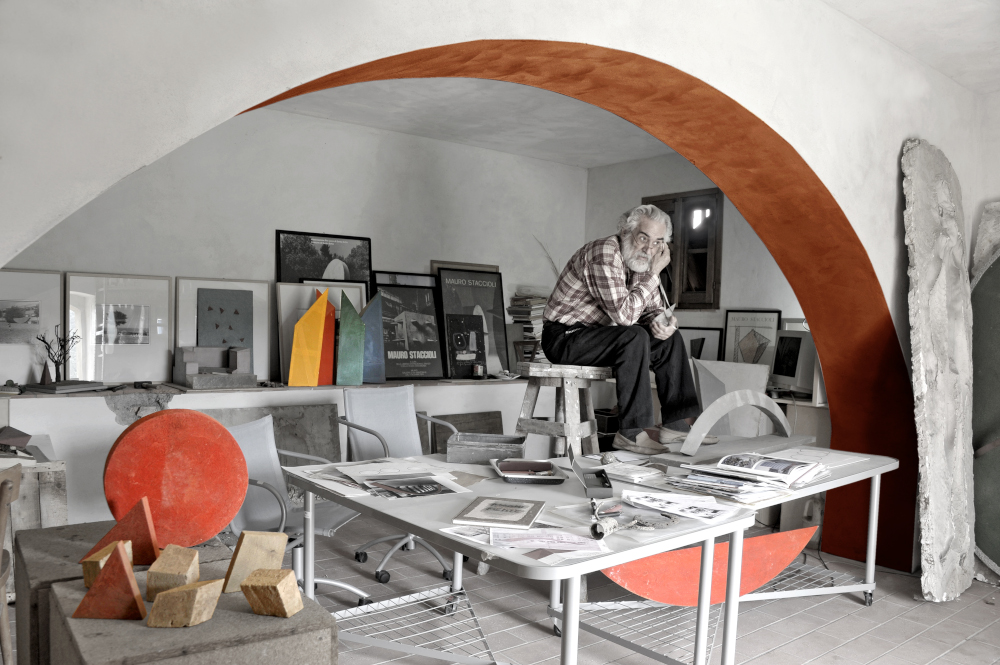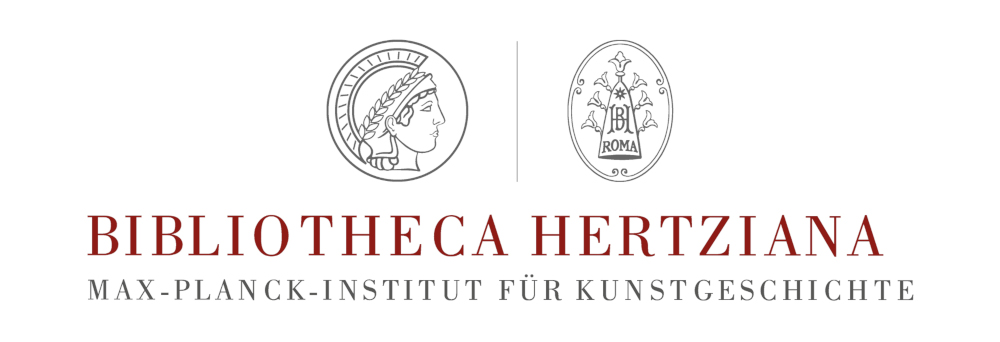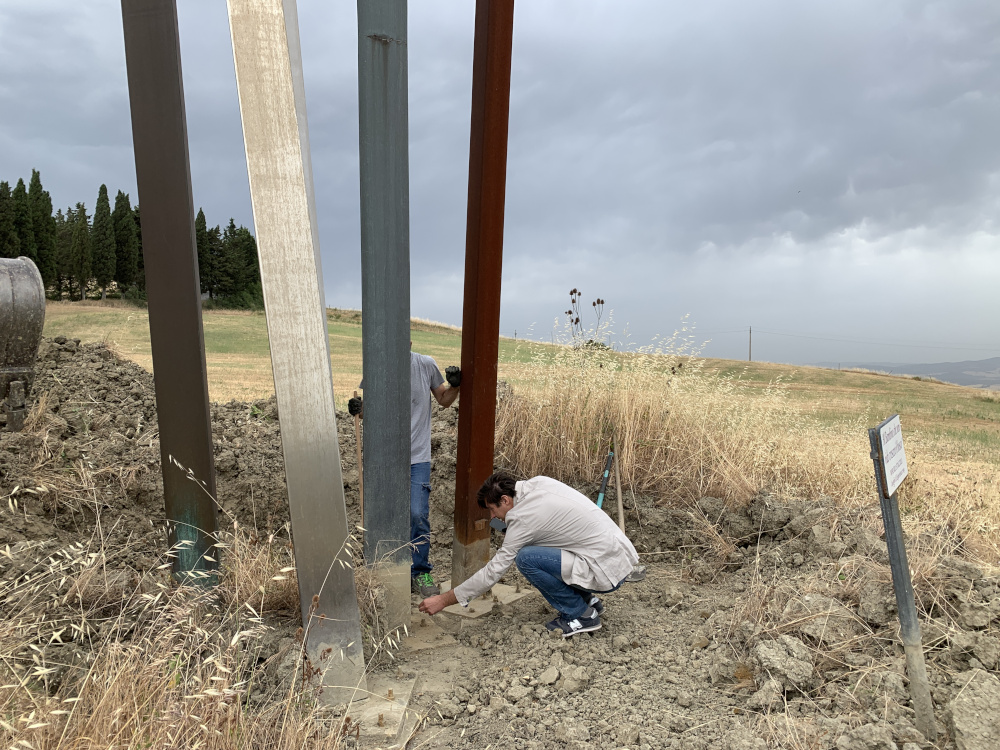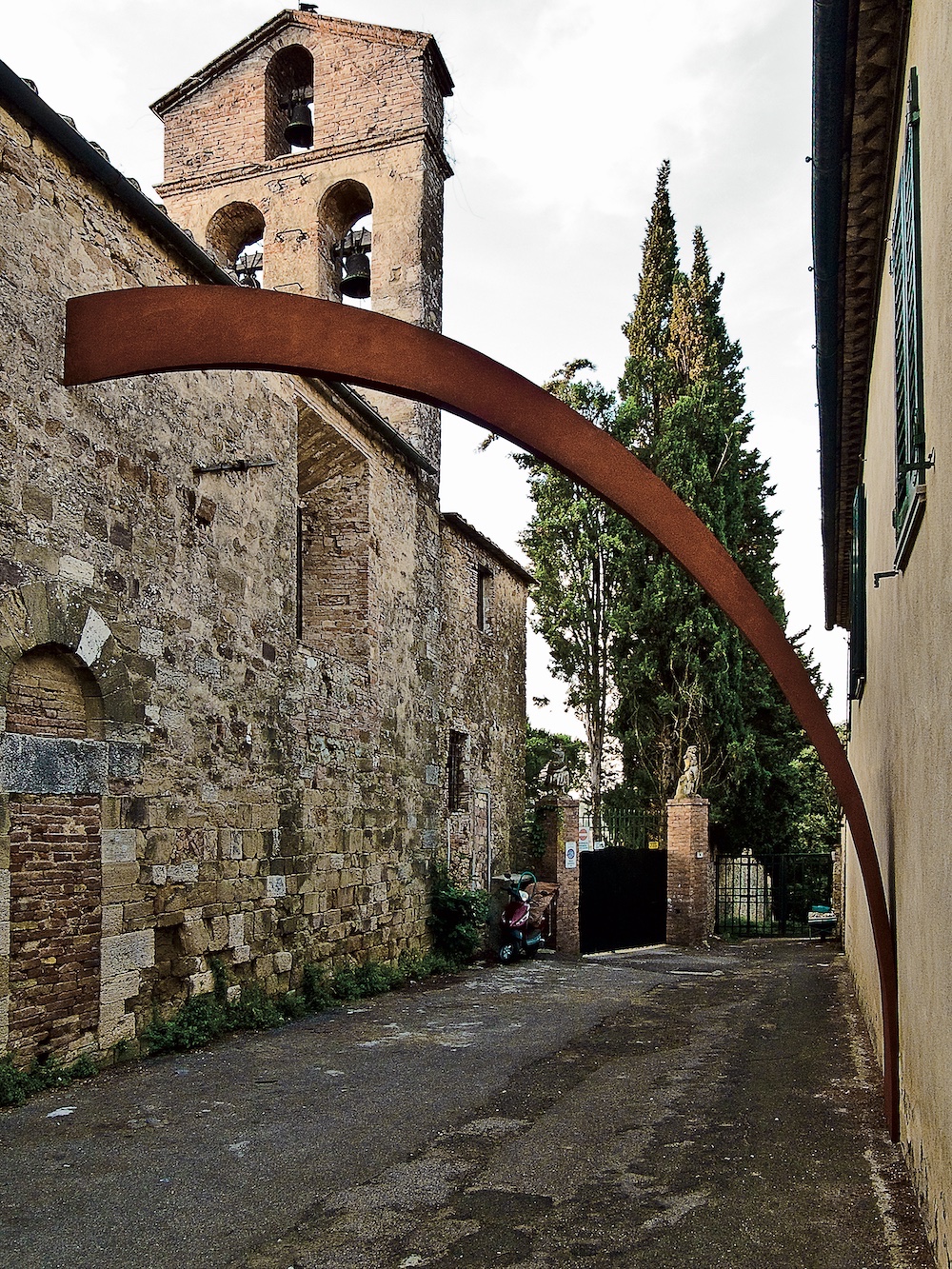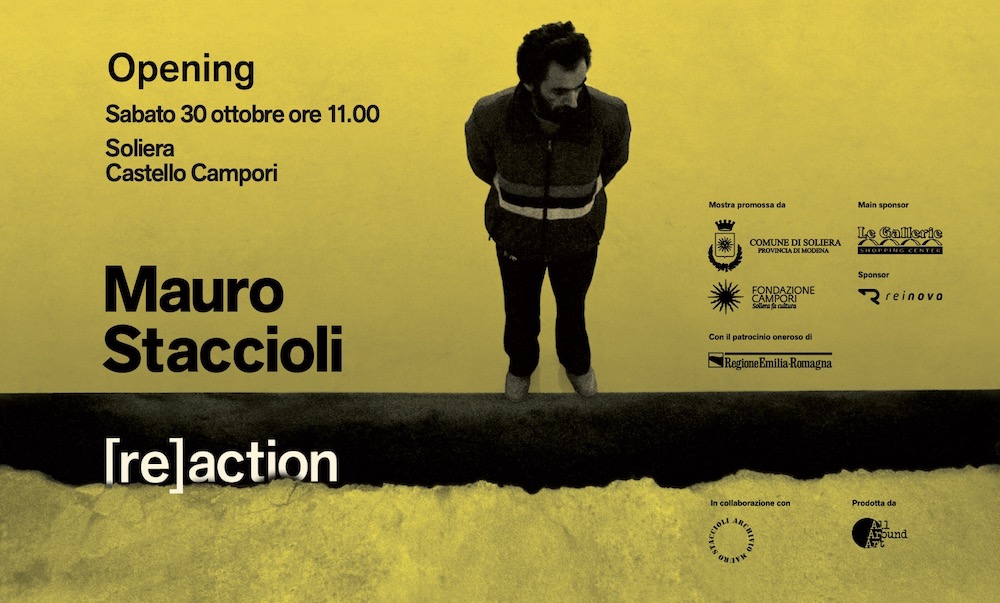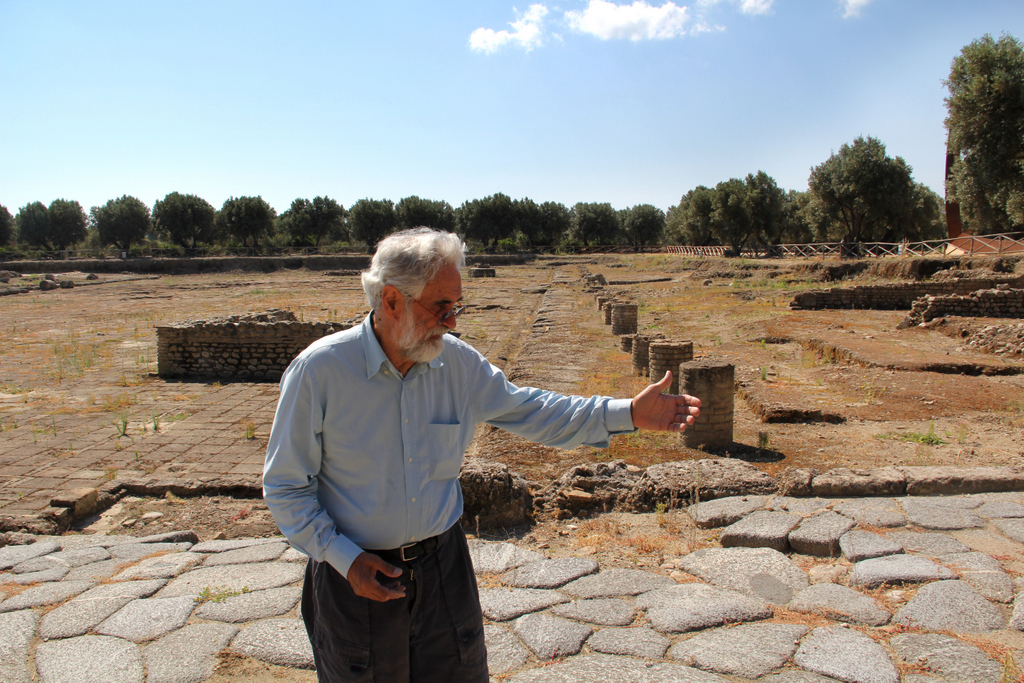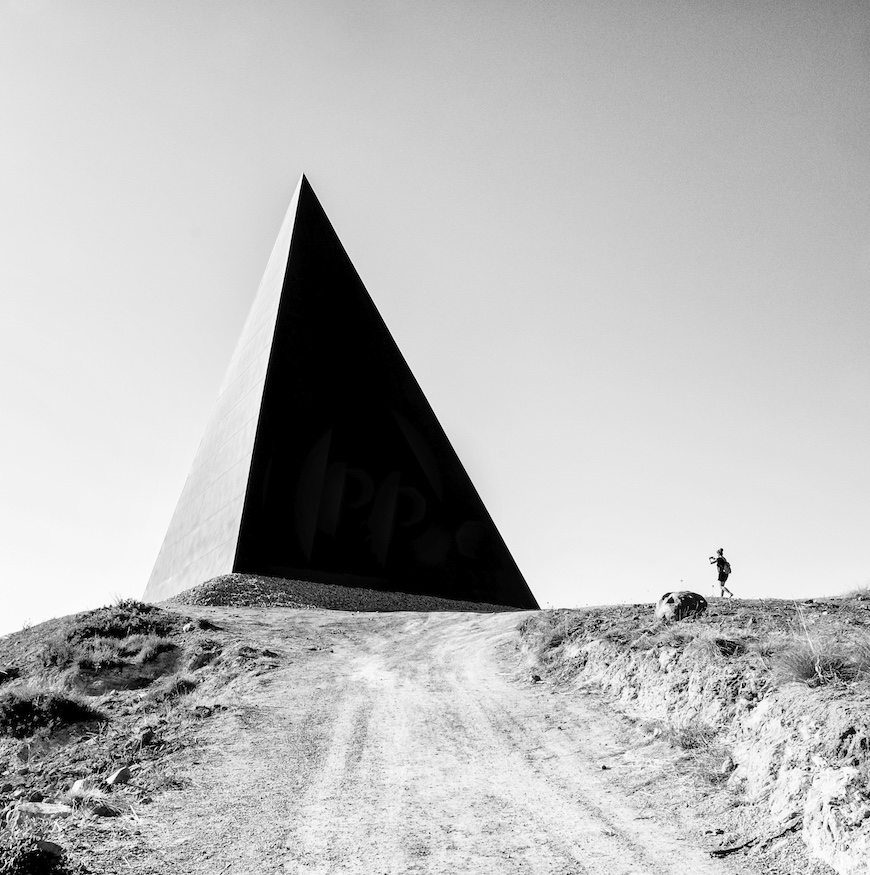MAURO STACCIOLI museum archive
Opening museum archive Saturday 20 January 2024, 12.30 pm
Oratorio del Crocifisso, via Franceschini, Volterra
Conference Saturday, 20 January 2024, 10 am
Centro Studi Espositivo Santa Maria Maddalena
via Persio Flacco 2, Volterra
Introduction: Roberto Pepi, Chairman of the Cassa di Risparmio di Volterra Foundation.
Institutional Welcome: Eugenio Giani, President of the Tuscany Region, was invited to bring the greeting; Giacomo Santi, Mayor of the Municipality of Volterra; Sergio Borghesi, Mauro Staccioli Archive Association; Caterina Martinelli director of the Mauro Staccioli museum archive.
Speakers: Tristan Weddigen, Director of the Bibliotheca Hertziana Max Planck Institute for Art History, Rome; Francesco Tedeschi, Full Professor at the Università Cattolica del Sacro Cuore, Milan; Alberto Fiz, curator and journalist; Francesca Pola, Associate Professor at the Vita-Salute San Raffaele University, Milan.
Moderator: Anna Mazzanti, Associate Professor at the Polytechnic University of Milan.
Saturday 20 January 2024 sees the opening in Volterra of Mauro Staccioli museo archivio, which takes up permanent residence in the Ex-Oratorio del Crocifisso. The venue, inside the Centro Studi Espositivo Santa Maria Maddalena, is made available by the initiative’s promoter, the Cassa di Risparmio di Volterra savings bank foundation.
And so, the result of the last four years of work by the Mauro Stacccioli Archive Association and the massive digitization project carried out by the Digital Humanities Lab and Photo Library of the Rome-based Bibliotheca Hertziana – Max Planck Institute for Art History finally takes shape.
About forty mock-ups dot the nave of the Ex-Oratorio del Crocifisso, some of the many made over the years by Staccioli to study, test and present his sculptures. The actual works, combining a strict architectural outlook with a poetic utopian vision, are found in urban or natural contexts.
The set of sculpture designs is accompanied by an interactive touch screen specially designed to trace the story of the large sculptures made by the artist in Italy and abroad using archival documents, sketches, preparatory drawings and digitized design photomontages.
The artist’s paper archive, consisting of notes, drawings, plans, documents, photographs and catalogues, has also found new home in the Ex-Oratorio spaces. The new location and the database created by the Bibliotheca Hertziana will grant scholars easier access to the documents for further studies of the artist’s life and work.
As Maria Laura Gelmini writes in Mauro Staccioli, All’origine del fare/At the Roots of Sculpting, «Mauro Staccioli follows his own peculiar procedure designed to meet the grounding need underpinning his own line of thought: to interpret a place in light of history and leave an indicative sign in the wake of this interpretation. The artist conscientiously adopted this approach in the late 1960s: politically engaged, he believed that art was his dutiful way of getting involved in debate. His awareness of the historical-social environment emerged in Volterra in 1972: the place, urban space, building and nature have their own history, their own life, they carry the imprints of ancient events or socio-environmental situations. A few years later Staccioli entitled his exhibition at Vigevano Castle (1977) Lettura di un ambiente (Reading of a Setting). The artist ‘reads’ the site before leaving his mark, which is gauged not only to space but also to human presence.
Intensive but invisible work proceeds Staccioli’s sculpting, a perfect poetic synthesis of rhythm and measure in relation to location. The materials he has collected in his archive-studio during over 40 years’ work pay homage to all his intensive activity, providing keys to interpreting his creative process. […] An elaborate intellectual process, very similar to that of an architect: right from when first coming into contact with a location, its history and traces are cleverly photographed and embellished by invaluable notes recording what first struck him and the first forms coming to mind on-site.
At this point the artist’s imagination can run free through across well-defined design terrain, as faithful as possible to the history and environment of the location. […]»
MAURO STACCIOLI: CEMENTING AN ARTISTIC LEGACY | MAURO STACCIOLI: CONSOLIDARE UN’EREDITÀ ARTISTICA
curated by Marica Antonucci
October 19, 2023 – January 19, 2024
Bibliotheca Hertziana –Max Planck Institute for Art History
Via Gregoriana 30, Roma
Hours: Monday to Friday, 9.00am – 7.00pm
Wednesday October 18 from 3.00pm to 6.00pm workshop Scultura italiana dal dopoguerra agli anni Ottanta
The exhibition, titled Mauro Staccioli: Cementing an Artistic Legacy | Mauro Staccioli: Consolidare un’eredità artistica, showcases a collection of over thirty objects, encompassing both works of art and archival materials related to the sculptural practice of Italian artist Mauro Staccioli (1937- 2018). This exhibition provides a unique opportunity to view numerous pieces that will be displayed for the first time for the public. These objects, drawn from the artist’s archive, form an integral part of a larger digitization project carried out by the Bibliotheca Hertziana – Max Planck Institute for the History of Art, particularly its Digital Humanities Lab and its Photographic Collection, in collaboration with the Mauro Staccioli Archive. Together, the materials on display offer fresh insights into both the artist’s creative process and the reception of his work during the 1970s and 1980s. It was during this period that the artist developed his so-called “sculpture-interventions”— large, temporary, site-specific constructions made of cement and iron, designed to stimulate critical reflections on one’s surroundings.
The digitization project, centered on Staccioli’s practice spanning the years 1969–1988, yielded an impressive total of 7423 scans. Through meticulous systemization, it was possible to identify 158 works, 152 events, 148 institutions, 86 places, 43 key words, and 39 plastic and pictorial materials. This identification was achieved by using the structured vocabulary tools of the Getty Research Institute (AAT, ULAN), the German National Library (GND), and Wikidata. As all the data from the archive has been organized using standard vo- cabularies broadly recognized within the discipline of art history and the realm of cultural heritage, it is universally interpretable, much like the other open data maintained by the Bibliotheca Hertziana. Furthermore, a custom- made application enables users to explore the digitized collection. It leverages semantic data storage technologies, employing a structured data graph, complemented by hidden features designed to facilitate discovery of new content during browsing.
Through these diverse components, the exhibition highlights both Staccioli’s sculptural practice and the crucial role archives play in stimulating new research endeavors. In particular, the exhibition underscores the importance of archives in understanding artistic practices rooted in ephemerality, unique impact on postwar akin to Staccioli’s “sculpture-interventions”.
MAURO STACCIOLI. SAN GIOVANNI VALDARNO 1996-2023
curated by Ilaria Bernardi
with the scientific contribution of Caterina Martinelli
24 june – 17 september 2023
opening 24 june, 4.30pm
Casa Masaccio Centro per l’Arte Contemporanea
San Giovanni Valdarno – AR
In 1996 Mauro Staccioli installed five large concrete wheels (⌀300 cm and 60 cm thick) in San Giovanni Valdarno in Corso Italia, the fulcrum of community life. Marking the directrix of the urban layout designed by Arnolfo di Cambio, they were an occasion to rethink history through the present day. “An open sculpture, scattered yet built, modelled by measurements of plastic and formal balances; by degrees of proximity to the urban, architectural environmental context, listening to its human drives, morphological, tactile, visual suggestions”, wrote the artist on this intervention.
Originally meant to be a temporary fixture, the five large wheels were instead left by the artist to the municipality in view of finding a new, permanent home. Staccioli himself hypothesized a location in numerous plans, including the last one, presented on occasion of the exhibition at Casa Masaccio Centro per l’Arte Contemporanea in 2011, which suggested installing the work in the space that acts as a junction between one of the former Italsider plants, the S. Andrea industrial zone and the new northern access to the town, lining the edges of the wheels with a band of corten steel, symbol of the steel business and of the industrial history of the city.
By the will of the Municipal Administration, thanks to the definitive donation made by his daughter, Giulia Staccioli, to San Giovanni Valdarno and with the support of the Mauro Staccioli Archive, the installation will be inaugurated in its definitive location on Saturday 15 July at 21, in the presence of Mayor Valentina Vadi and the president of the Archive Giulia Staccioli.
To bring the public closer to this important event, at Casa Masaccio centro per l’arte contemporanea will present the 1996 planning documents for the work and the revised 2011 plans for its new location. Also on display will be an important group of works that can help delve further into Staccioli’s art: the concrete and iron works from the 1970s (Anticarro, 1971, Barriera, 1970/1992), whose sharp iron tips and angular iron bars encourage a critical understanding of the so-called “years of lead” in relation to the present time in history; and some Corten steel works (La Boldria, 2009, Ellisse, 2005-2006, Triangolo dai lati curvi, 2010) which bear witness to his 1980s turn towards environmental art as he sought to ‘sculpt places’ by putting a sculptural mark in dialectical relation to the place where it was situated. A video made by Francesco Castellani on Staccioli’s major installations in Italy will also be projected on the second floor of Casa Masaccio.
The exhibition is accompanied by the catalogue “Mauro Staccioli. San Giovanni Valdarno 1996-2023″, with texts by Ilaria Bernardi and Caterina Martinelli, in Italian and English, and photos of the exhibition and installation taken by OKNO Studio – Ela Bialkowska pp. 64, 17×20 cm, Ed. Gli Ori, Pistoia 2023.
MAURO STACCIOLI. SCULPTURE AS TRANSFORMATIONAL THOUGHT
curated by Francesca Pola
9 march – 4 may 2023
opening 9 march, 6.00 pm
A arte Invernizzi, Via D. Scarlatti 12, Milan
The A arte Invernizzi gallery opens a solo exhibition by Mauro Staccioli on Thursday 9 March 2023, at 6 p.m., ten years after his last solo show in the same spaces, and five years since he passed away.
The exhibition includes a number of sculptures in various materials – such as concrete, iron, and weathering steel – that are typical of his sculptural language, and a selection of works on paper that trace his interactions with the various places.
The exhibition starts with a work, in concrete and iron, that greets the visitor at the entrance: this work from 1976 is emblematic of the artist’s first period, with the iron tip that emerges from the concrete having the two-fold effect of attraction and repulsion. These were years when Staccioli was one of the pioneers of a form of sculpture that left the usual spaces of museums and galleries and became part of the urban fabric and of the territory, with its presence being felt in a space that was both physical and social.
Three series of works in weathering steel are shown upstairs: their sculptural forms recall famous works created in public spaces, interacting with their settings. These include the “intervention sculpture” consisting of an inverted arch designed for the opening of the Luigi Pecci Centre for Contemporary Art and for the Olympic village in Seoul. Then there is the crescent-shaped work created for the Fridericianum in Kassel in 1988 and now reconfigured to a design by the artist in the Intesa Sanpaolo – Gallerie d’Italia collections in Milan. Lastly, we find the ellipse that recalls the Primi passi [First Steps] work created in Volterra in 2009.
The weathering steel projects for the “Forme perdute” [“Lost Forms”] series are on display in the last room on the upper floor. These large-format circular-based shapes were created for the 2012 solo exhibition in the spaces of the A arte Invernizzi gallery and are now on permanent display at the Museo d’Arte Contemporanea all’Aperto in Morterone, where visitors can also see Tondi [Tondos], another of his “intervention sculptures”, to which some of the drawings on display are linked.
Six sculptures from the “Sbarra e cemento” [“Bar and Concrete”] cycle, which the artist conceived in the 1970s, are shown on the lower floor, where they enter into a surprising dialogue with the columns of the exhibition space. These works come from the germinal period of Staccioli’s artistic career and they contain the same intrinsic energy that can be perceived in all his works on an environmental scale, which enables them to enter into a relationship with the space around them. With their material tangibility they fit into the environment and give it a new perspective, inviting the viewer to go through it in a new, mindful manner.
A bilingual monograph with an essay by Francesca Pola will be published on the occasion of the exhibition. It will include iconographic and bibliographic material that retraces Staccioli’s works over the course of twenty-five years in collaboration with A arte Invernizzi, both at the gallery and in public and private spaces.
MUNICIPALITY of VOLTERRA for MAURO STACCIOLI
The structural revision and restoration campaign of Mauro Staccioli’s monumental sculptures present around Volterra has finally concluded. This important intervention was financed with the sum of 10,000 euros, thanks to the sensibility of the mayor Giacomo Santi, the councilor for culture Dario Danti and the entire council of the Municipality of Volterra.
The works are visible and well marked also thanks to the creation of an app desired by the councilor for education and tourism Viola Luti. The Esplora Staccioli app can be downloaded with your mobile phone and allows you to visit all the sculptures, choosing the most suitable routes for your needs. A journey that will allow you to enter the heart of Volterra countryside to be able to appreciate it in all its beauty while enjoying the artist’s works.
BIBLIOTHECA HERTZIANA for MAURO STACCIOLI
The research project at the Archivio Mauro Staccioli, conducted by the Bibliotheca Hertziana and followed by Caterina Martinelli, has as its aim the digitization of the archive materials contained there. It consists in the drafting of a documentation analytical inventory related to the selected years from 1971 to 1988. This will allow the researcher to examine in detail not only the most well-known works but to understand connections and relationships with the lesser-known ones, to be able to compare them, building a wider and more accurate analysis. It also includes the drafting of a detailed description of the archival materials, fundamental for the historical and artistic reconstruction of the artist works and for the situational dimension in which they fits. This analytical inventory is intended to provide the researcher with in-depth documentation; it will allow to understand in detail the work together with its historical and artistic context. Finally, thanks to the study of the documentary material, the identification and cataloging of critics, gallery owners, suppliers and more generally of all the professionals or institutions that gravitated around the artist is foreseen.
MAURO STACCIOLI. MUNICIPALITY of VOLTERRA
Agreement with the Municipality of Volterra for the static verification, restoration, maintenance and enhancement of the works of Mauro Staccioli distributed throughout the territory.
In 2009 was organized in the surroundings of Volterra, with the collaboration of public entities and privates, the exhibition Luoghi di Esperienza 1972-2009, of the artist from volterranean origin Mauro Staccioli. A complex exhibition made up of projects, maquettes, drawings, sculptures, whose heart was a series of site-specific installations, designed by the artist to be in a strict connection with the landscape of Volterra and his surroundings.
Thanks to the will of Mauro Staccioli himself, of his Archive and of the Associazione Fotoimmagine, in collaboration with other entities and associations, these sculptures remained in their places, in agreement both with the private owners of the works and with those of the lands over which they are installed.
As time goes by, these monuments became one of the symbols more appreciated of the contemporary art in Volterra and they represent an important attraction for enthusiasts, tourists and curious, attracting to the area, each year, thousand of people that travel onto our countryside.
In these years Associazione Fotoimmagine has taken care of the maintenance of the artworks and its valorization, even with trough specific initiatives. At present time an agreement was signed between the Archivio Mauro Staccioli and the Comune di Volterra, in which the latest is committed, with a financing of € 10.000,00 to be granted directly to the Archivio, to participate to the maintenance, to the safeguard and to the enhancement of the artworks by Mauro Staccioli spread in the Volterra’s landscape. The works have begun the 28th June 2022.
MAURO STACCIOLI / MAZZOLLA 2022
curated by Sergio Borghesi
12 june – 18 september 2022
opening 12 june, 5.30 pm
Mazzolla – Volterra (PI)
Fifty years after the Mauro Staccioli Sculture in Città exhibition, held in Volterra, the Amici di Mazzolla association, with the patronage of the Municipality of Volterra and the collaboration of the Mauro Staccioli Archive, pays tribute to the artist and friend with the exhibition of events Mauro Staccioli / Mazzolla 2022.
The review, which takes place in the village of Mazzolla, is part of the “Volterra Tuscan City of Culture 2022”, an initiative established by the Tuscany Region.
“Often, as we mature, we return to (and perhaps reconcile with) our roots, retrace the paths
we walked during childhood and rediscover that depth of feeling that binds us to our land. Mauro Staccioli also took this path. Leaving Volterra to teach in Sardinia, he then went to Milan, from where he left to “leave his mark” in the world. From Korea to Ecuador, from Belgium to Japan, from the United States to Poland, journeys that eventually brought him back to his origins, to the Volterra countryside and to that cottage he loved so much and from which, in the evening, at sunset, he used to contemplate the opposite hill, the one on which the village of Mazzolla rises, which today dedicates a heartfelt memory to him.
Staccioli had already manifested this deep love for his homeland in 2009. He interpreted the natural, artistic and historical characteristics of Volterra, and intertwined them with
his personal memories. This shaped the exhibition Mauro Staccioli. Volterra 1972-2009. Luoghi d’esperienza. Twenty installations some of which are still visible (thanks to the efforts of dear friends), trace a path of over 90 km that includes Mazzolla, testifying to the link between the artist and this village. On that occasion Staccioli created an arch, in the favorite oxide red color, whose evocative title today appears even more significant Attraversando la storia. An arch that highlighted the medieval wall of the Church of San Lorenzo and at the same time signaled its vulnerability if left without adequate support.
Almost thirteen years later, the “Amici di Mazzolla” association pays tribute to a much missed dear friend, rebuilding and relocating the arch on the side of the church and inaugurating the exhibition Caro Mauro. A carefully curated selection of works, displayed in the garden and the cellar of Villa Viti, outlines the legacy of the artist featuring some of his most famous works.”
Simona Santini
MAURO STACCIOLI [re]action
curated by Lorenzo Respi
30 october 2021 – 30 january 2022
Castello Campori, Soliera (MO)
ESPLORA STACCIOLI
WebApp to promote the Volterra territory through an itinerary that has as its stops the works of Mauro Staccioli.
The service is conceived and funded by Comune di Volterra in partnership with Camera di Commercio di Pisa and made by Softhrod Srl.
The app “Esplora Staccioli” was born to enhance the tourist and make Mauro Staccioli’s masterpieces known in an even more incisive way. The app presents itself as a modern and progressive web app working on a simple browser and available in both Italian and English. The app makes it possible for the tourist to follow the route of Mauro Staccioli sculptures, mapped and georeferenced, from Volterra to Pomarance, receiving information regarding the works, the landscape, and tourist accommodation.
© Softhrod.
DIGITAL FOR MAURO STACCIOLI
Digital exhibition of the winning project “Toscanaincontemporanea 2020”
curated by Ilaria Bernardi
30th November 2020 – ongoing
The Associazione Archivio Mauro Staccioli is pleased to present Digital for Mauro Staccioli, the project curated by Ilaria Bernardi which won the “Toscanaincontemporanea 2020” competition promoted by the Regione Toscana and carried out by the Centro per l’Arte Contemporanea Luigi Pecci in Prato.
Designed to give the archive a more contemporary slant, Digital for Mauro Staccioli has followed three different directions to animate and project the archive into the future.
First of all, it envisaged an initial sort-through of the Staccioli Archive, with the creation of an inventory of the relative documents which will also be digitalized by the Bibliotheca Hertziana. In addition, the inventory will be published online on the association website, making it available to Staccioli scholars and enthusiasts.
Second, alongside the website, accounts have been set up on the biggest social networks (Instagram and Facebook) to enable the more connected younger generations to get to know the artist more easily.
Lastly, to launch the archive into the future, an online exhibition has been put together with commissioned works by artists from subsequent generations to Staccioli. Since the works had to be designed for digital use only, the artists were led to reflect, use and cast light on the distinctive features of this dimension in relation to our perception, a pivotal topic in Staccioli’s research. The exhibition is permanent and can be viewed in the new section of the “Artists for Staccioli” site. It includes ten works by the following artists, Tuscan by birth or by adoption: Massimo Bartolini, Francesco Carone, Loris Cecchini, Vittorio Corsini, Daniela De Lorenzo, Flavio Favelli, Giovanni Ozzola, Paolo Parisi, Luigi Presicce and Enrico Vezzi. What is more, their works are related, by affinity of shape, topic or meaning, to sculptures by Staccioli through photographic documents taken from the archive and included in the show.
The idea to invite artists from successive generations to create a work in homage to Staccioli is to encourage a rereading of his work, to give it new life so it can generate and provide input for new creativity.
© Antonio Renda, Catanzaro.
SONY WORLD PHOTOGRAPHY AWARDS 2020
Rosaria Sabrina Pantano
Emotional Geography
Rosaria Sabrina Pantano won the Open competition of the Sony World Photography Awards 2020, in the category Architecture, with Emotional Geography, the black and white photo of the Piramide – 38° parallelo in Motta d’Affermo, Messina.


